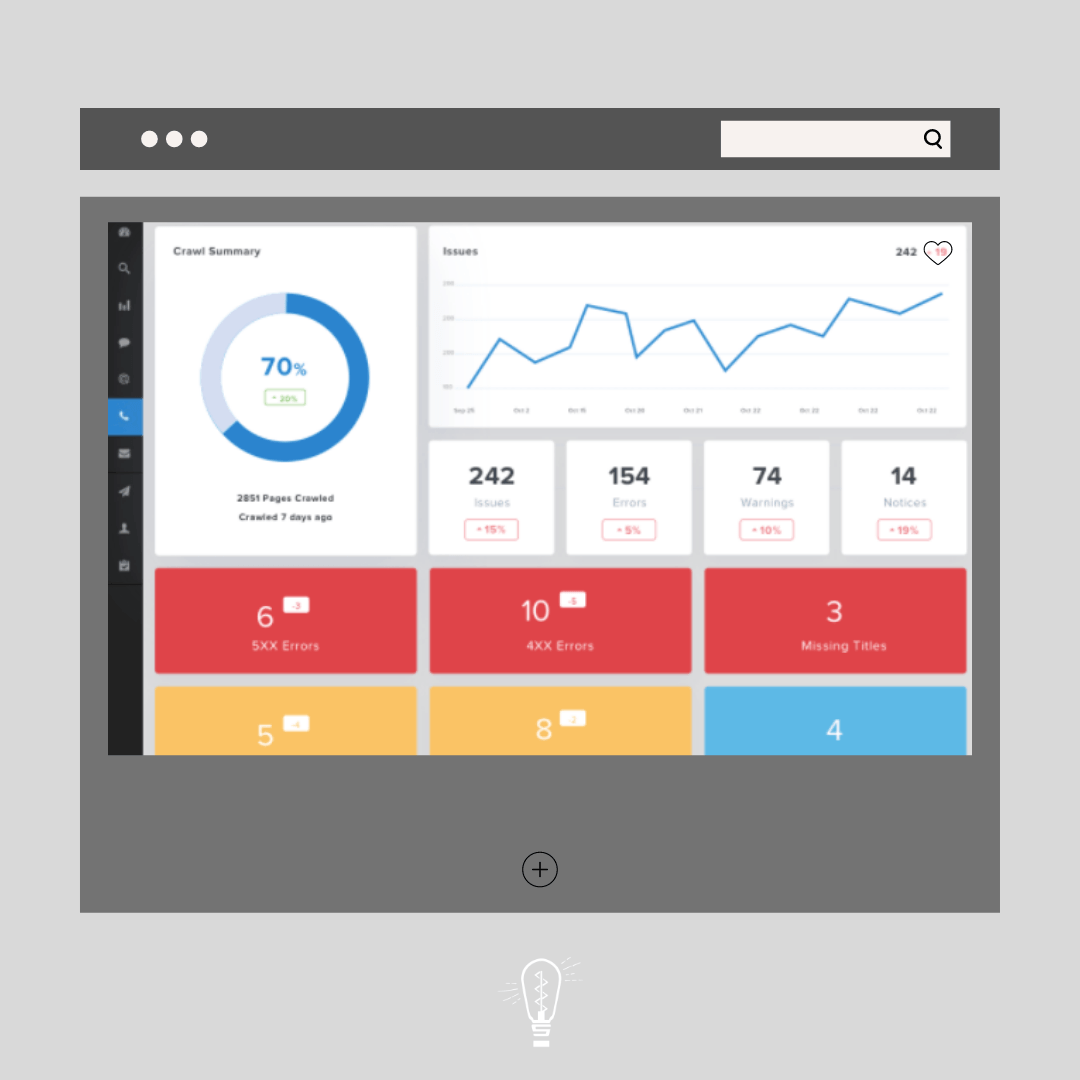Unearthing the Hidden Cracks: A Guide to Discovering Broken Links on Your Website
Share article
A fluid, frictionless user experience is the cornerstone of any successful website. However, lurking beneath the surface of your meticulously designed site may be hidden cracks, known as broken links, that can severely undermine this experience.
A broken link is like a road leading nowhere, leaving your visitors stranded and frustrated. In fact, according to a recent SEMrush study, 40.5% of 150,000 websites analyzed had broken external links [1]. This statistic isn't just alarming—it's a wake-up call. A single broken link can compromise your site's performance, diminish your SEO rankings, and erode your credibility. But fear not. This guide will empower you to unearth these hidden cracks and seal them, enabling you to provide the seamless, top-notch user experience your visitors expect and deserve.
The Detrimental Effects of Broken Links
Broken links can wreak havoc on your website in a myriad of ways. Let's delve into some of the most significant impacts:
SEO Rankings
Search engines, like Google, use crawlers to index and rank your site. Broken links obstruct these crawlers, leading to incomplete indexing and a subsequent drop in your site's SEO rankings. For instance, an article by Moz revealed that websites with numerous broken links may rank lower in search engine results [2].
User Experience
From a user's perspective, nothing is more frustrating than clicking on a link and being met with a "404 page not found" notification. This negatively impacts the user's experience on your site, decreasing user engagement and increasing bounce rates. Google has stated repeatedly that they give priority to sites that have "helpful content" and a great user experience. Any interruption in the customer journey may be looked at negatively in the eyes of Google, potentially harming your website's rankings.
Website Credibility
Broken links can also tarnish your website's credibility. Trust is a crucial factor in the online realm, and sites with numerous non-functioning links are seen as less reliable. Users may assume that your site is outdated, neglected, or worse, fraudulent. This can significantly damage your brand's reputation and deter potential customers from returning to your website.
Utilizing Website Crawling Tools
Locating broken links on your website becomes a breeze when leveraging efficient website crawling tools. Popular tools like Screaming Frog, Ahrefs, and SEMrush can conduct comprehensive scans of your website, automatically identifying and reporting any broken links.
Screaming Frog is a renowned website crawler that hunts down broken links (404s) and server errors, amongst other things. It's user-friendly and provides detailed results swiftly.
Ahrefs excels at backlink analysis and enables you to unearth all broken inbound and outbound links, helping you identify any missed opportunities or threats to your site's SEO rankings.
SEMrush offers a site audit tool that, in addition to detecting broken links, can also conduct comprehensive website health checks, identifying areas for potential improvement.
For the purpose of this guide, let's delve into the step-by-step process of using SEMrush's site audit tool to discover and fix broken links on your website.
Step-by-Step: Using SEMrush's Site Audit Tool
- Begin by creating an account on SEMrush if you don't have one already.
- Once logged in, navigate to the "Site Audit" tool under the "Projects" section.
- Enter your website's URL and click "Start Site Audit."
- Wait for SEMrush to conduct the initial site audit.
- Once completed, navigate to the "Overview" section under the "Site Audit" tab.
- Scroll down to the "Issues" section and select "Broken Pages."
- Here you will find a comprehensive list of all broken links on your website, along with the page they are located on and their HTTP status codes.
- Click on each broken link to view more details, including where it is located on your site and how many internal links point to it.
- Take note of all the broken links and begin working towards fixing them by either updating the URL or removing the link altogether.
- Once fixed, conduct another site audit to verify that the broken links have been resolved.
- Repeat this process regularly to ensure your site remains free of any hidden cracks.
Other affordable SEO companies like The Stack Group provide free website audits that offer detailed reports on broken links and other technical issues. You can request a free site audit online for US-based companies, and they will send you a full PDF report.

Prevention is Key
While fixing broken links is critical, prevention is always better than cure. Here are some tips to avoid broken links on your website:
- Regularly conduct site audits using tools like SEMrush or other website crawling tools mentioned above.
- Regularly update and review your website content, removing any outdated or irrelevant links.
- Consider using a 301 redirect for any broken links to redirect visitors to a functioning page instead of a "404 page not found" notification.
- Double-check all URLs before publishing new content on your site.
- Find a site audit tool or manage your SEO with an marketing agency and run a website scan every 30 days to make sure you catch all broken links before they have a chance to damage your site's performance.
- Keep an eye out for any changes in internal or external links and update them accordingly.
Sealing the Cracks: The Final Touch
While the SEO world tends to be a bit "overly complicated" and mysterious, simple concepts like a great functioning website that has no broken connection points can go a long way to ensuring your site ranks well on search engines.
Simply running a quick scan can find these errors and allow you to quickly address them before they potentially degrade your site's rankings. Make it a point to run 30 day site audit scans so you can catch any broken links before they have a chance to damage your site's performance.
Now that you know how to identify and fix broken links, it's time to put this knowledge into practice and keep your website running smoothly for both users and search engines. Happy crawling!
Want to run a free website audit?
The Stack Group will perform a free website audit for US based sites. In addition, we will do a manual overview of your domain to see organic traffic and the keywords you're currently ranked for. This audit typically takes an hour to perform. Once finished, the final audit will be emailed to you.
Questions? Have a project you're ready to launch?
Simply text our team at
(857) 256-1295 or send us a message!
Latest Articles




